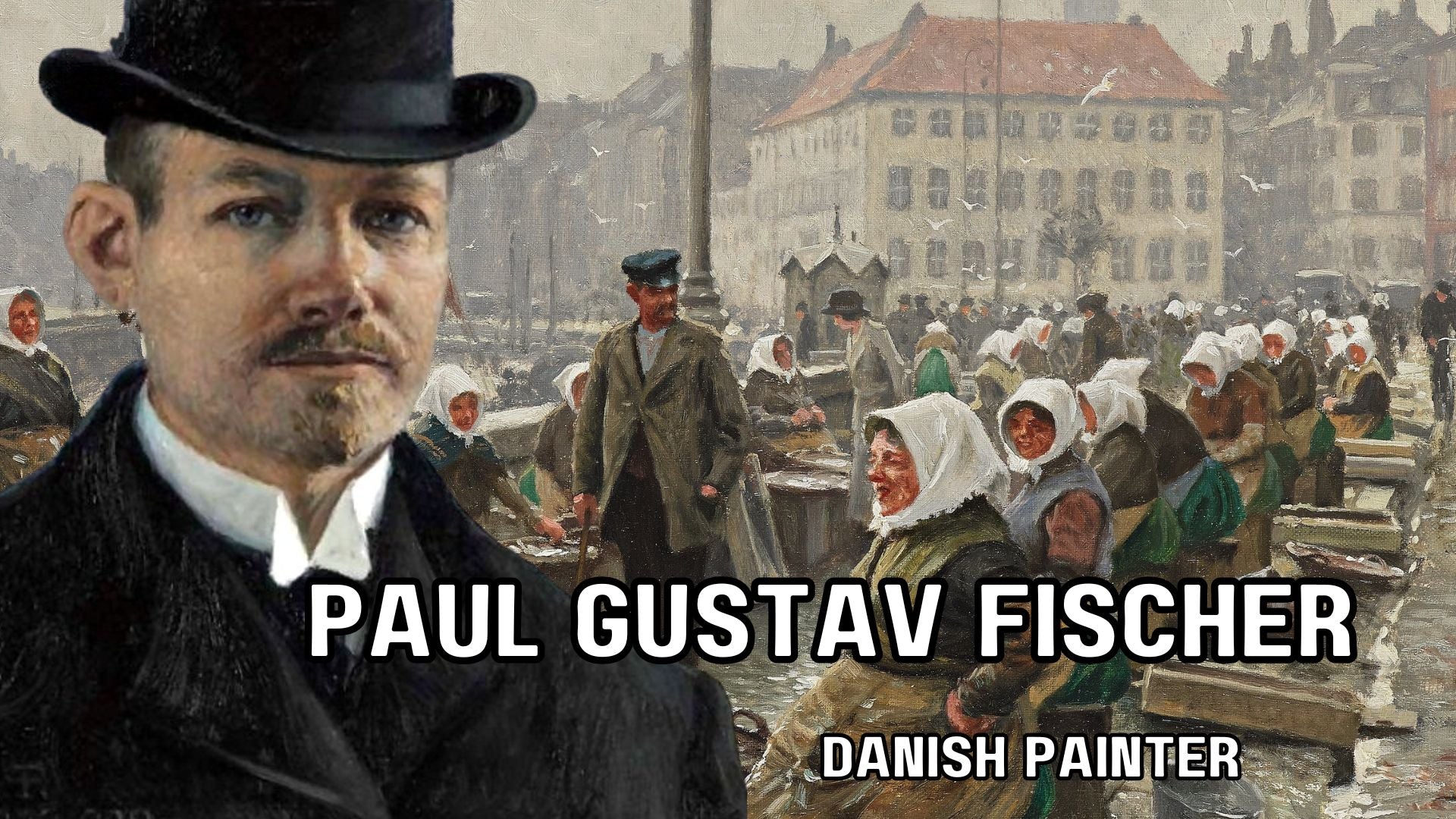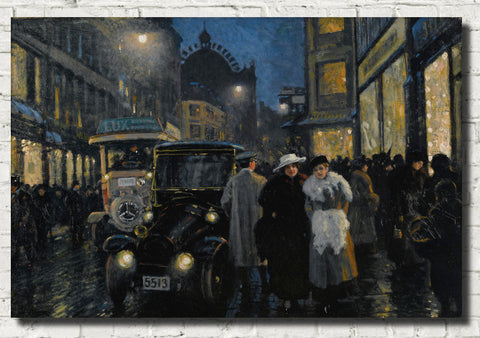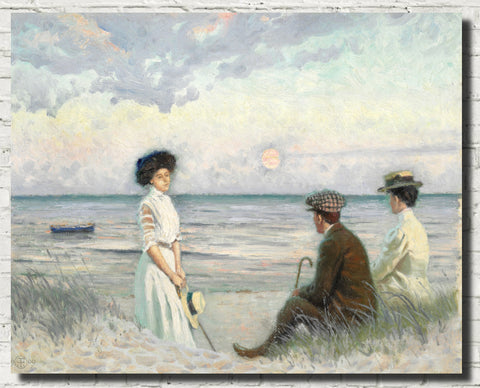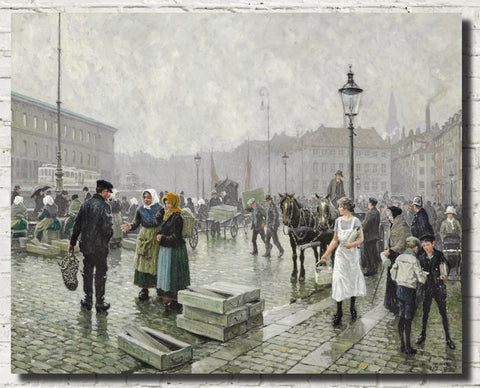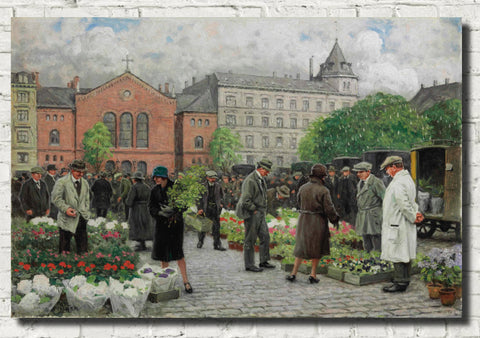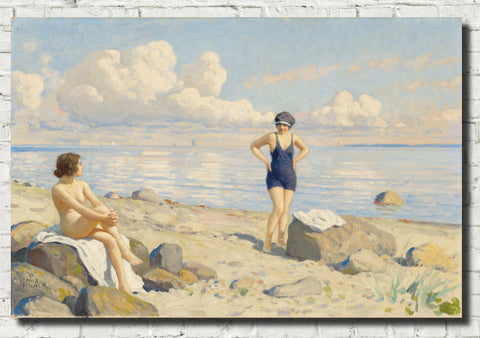Table of Contents:[hide]
Paul Gustav Fischer, a prominent Danish painter, left an indelible mark on the art world with his evocative depictions of urban life and serene landscapes. Born on July 22, 1860, in Copenhagen, Fischer's artistic journey is as captivating as his canvases.
Biography
Fischer's early life was steeped in creativity. Coming from a lineage of painters, his father's influence paved the way for his artistic endeavors. Despite a brief formal education at the Royal Danish Academy of Art, Fischer's passion for painting blossomed at a young age. His early works, showcased at the Charlottenborg Spring Exhibition from 1884 to 1902, hinted at his future acclaim.
Evolution of Style
Fischer's artistic evolution is evident in his oeuvre. Initially known as "Copenhagen's painter," his early works captured the bustling city life. However, a transformative period in Paris from 1891 to 1895 ignited a change in his palette. The influence of luminaries like Carl Larsson infused richness and lightness into his compositions.
Diversification of Themes
Fischer's repertoire extended beyond cityscapes. Inspired by the sun-drenched scenes of Scandinavia, Italy, and Germany, his paintings became a visual tapestry of diverse landscapes. Notably, his foray into bathing scenes and poster art showcased his versatility and willingness to explore new artistic avenues.
Recognition and Legacy
Despite initial lack of critical recognition, Fischer's art resonated with audiences. His ability to capture the essence of a moment, whether in urban settings or serene landscapes, ensured commercial success. Noteworthy is his commission to commemorate Sweden's transfer of sovereignty to Norway, a testament to his rising prominence.
Personal Life
Fischer's personal life reflected the complexities of his art. Marrying twice, his relationships mirrored the ebbs and flows of his artistic journey. His demise in 1934 marked the end of an era, leaving behind a legacy that continues to inspire artists and art enthusiasts alike.
Gallery
A glimpse into Fischer's gallery unveils the breadth of his artistic vision. From the ethereal beauty of "An evening stroll on the boulevard" to the contemplative allure of "Evening atmosphere at Falsterbo beach," each artwork is a testament to Fischer's mastery of his craft.
Conclusion
Paul Gustav Fischer's artistic legacy transcends borders and generations. His ability to capture the essence of life, whether in the heart of Copenhagen or amidst tranquil landscapes, cements his status as a luminary in the annals of art history.
Paul Gustav Fischer Prints and Canvas Panels
Prints and ready to hang canvas panels of Paul Gustav Fischer's paintings are available in a range of sizes with fast worldwide delivery.
Paul Gustav Fischer FAQ's
-
Who was Paul Gustav Fischer?
- Paul Gustav Fischer (1860–1934) was a renowned Danish painter celebrated for his depictions of city life, particularly in Copenhagen. Born into a Jewish family in Copenhagen, Fischer's artistic talent blossomed from a young age under the guidance of his father, Philip August Fischer.
-
What was Fischer's artistic style?
- Fischer's early works focused on cityscapes, earning him the moniker "Copenhagen's painter." Over time, his style evolved, influenced by his travels and contemporaries. He transitioned to brighter colors and lighter tones, capturing scenes from Scandinavia, Italy, and Germany. Additionally, he explored themes of leisure, often depicting sunny bathing scenes and incorporating elements of poster art into his work.
-
What was Fischer's education and artistic training?
- Fischer received formal art education at the Royal Danish Academy of Art in Copenhagen during his mid-teens. However, his formal training lasted only a short while. Much of his artistic development came from guidance provided by his father, who was a painter himself.
-
What were Fischer's major influences?
- Fischer drew inspiration from various sources, including fellow artists such as Carl Larsson, whose works influenced his style. He also admired poster artists like Théophile Steinlen and Henri de Toulouse-Lautrec, incorporating elements of their techniques into his own artwork.
-
Was Fischer recognized during his lifetime?
- Despite not receiving significant critical recognition during his lifetime, Fischer's art enjoyed commercial success. His paintings sold well, and he gained a reputation as a skilled painter of cities, earning commissions and accolades, including painting significant events such as the transfer of sovereignty of Norway.
-
What were some notable events in Fischer's personal life?
- Fischer was married twice in his lifetime. His first marriage to Dagny Grønneberg ended in dissolution, while his second marriage was to concert singer Martha Vilhelmine Jensen. Fischer passed away in Gentofte in 1934.
-
What legacy did Fischer leave behind?
- Fischer's legacy endures through his captivating artworks, which provide glimpses into urban life and leisure activities during the late 19th and early 20th centuries. His contributions to the art world, particularly in depicting cityscapes and everyday scenes, continue to inspire artists and art enthusiasts worldwide.
-
Where can one view Paul Gustav Fischer's artworks?
- Fischer's paintings are showcased in various galleries and museums, both in Denmark and internationally. Additionally, many of his works are available for viewing online, allowing art enthusiasts to appreciate his mastery from anywhere in the world.
-
What are some key resources for learning more about Paul Gustav Fischer?
- Those interested in delving deeper into Fischer's life and art can explore biographical resources such as books, articles, and online archives. Additionally, museums and cultural institutions often host exhibitions featuring Fischer's works, providing valuable insights into his artistic journey.
-
How did Fischer's cultural background influence his art?
- As a Danish artist of Jewish descent, Fischer's cultural heritage undoubtedly shaped his perspectives and artistic sensibilities. While his works predominantly focus on urban scenes and everyday life, his background likely infused his art with unique nuances and interpretations, enriching the tapestry of his artistic legacy.

